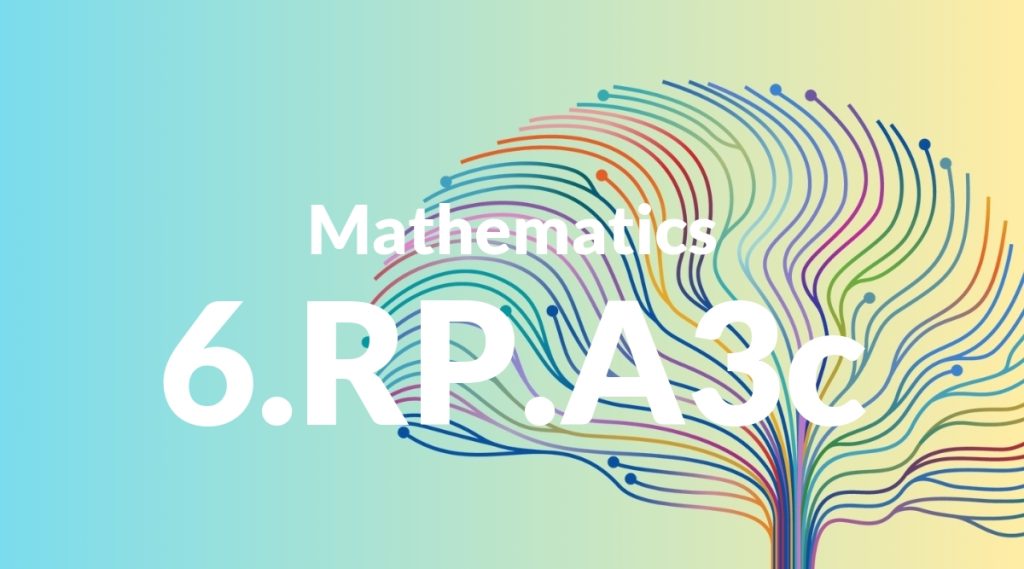Standard: 6.RP.A3c – Find a percent of a quantity as a rate per 100 (e.g., 30% of a quantity means 30/100 times the quantity); solve problems involving finding the whole, given a part and the percent.
Grade level: Grade 6
Subject: Mathematics
Domain: Ratios & Proportional Relationships
Teacher Overview
This standard focuses on helping students understand percentages as a rate per 100 and apply this understanding to solve real-world problems. Mastering this concept is crucial as it lays the groundwork for more advanced topics in proportional reasoning and algebra. Students should be familiar with basic fraction and decimal concepts. They should understand how to convert between fractions, decimals, and percentages.
Students will be able to apply their understanding of percentages to more complex proportional reasoning problems and algebraic concepts.
Common Misconception 1
Students may think that percentages over 100% are not possible. This is incorrect because percentages can represent any ratio, including those greater than the whole.
Intervention 1
Use examples like sales markups or population growth rates to show that percentages can exceed 100%. Provide practice problems where students calculate percentages over 100%.
Common Misconception 2
Students might believe that 50% of a quantity is the same as 50 of that quantity. This is incorrect because 50% means half of the quantity, not a fixed number.
Intervention 2
Provide visual aids and concrete examples to show that 50% represents half of any given quantity. Use different quantities to illustrate that 50% varies depending on the whole.
Prerequisite Knowledge
Students should have a basic understanding of fractions and division. They should be comfortable with converting fractions to decimals and vice versa.
Subsequent Knowledge
After mastering this standard, students will be able to tackle more complex problems involving proportional relationships, such as scaling figures and working with similar shapes.
Instructional Activities
- Create a classroom store where students calculate discounts and sales tax on items.
- Use real-world data to calculate population growth percentages.
- Have students design a survey and calculate the percentage of responses for each option.
- Practice converting between fractions, decimals, and percentages using visual aids.
- Solve word problems that involve finding the whole, given a part and the percent.




